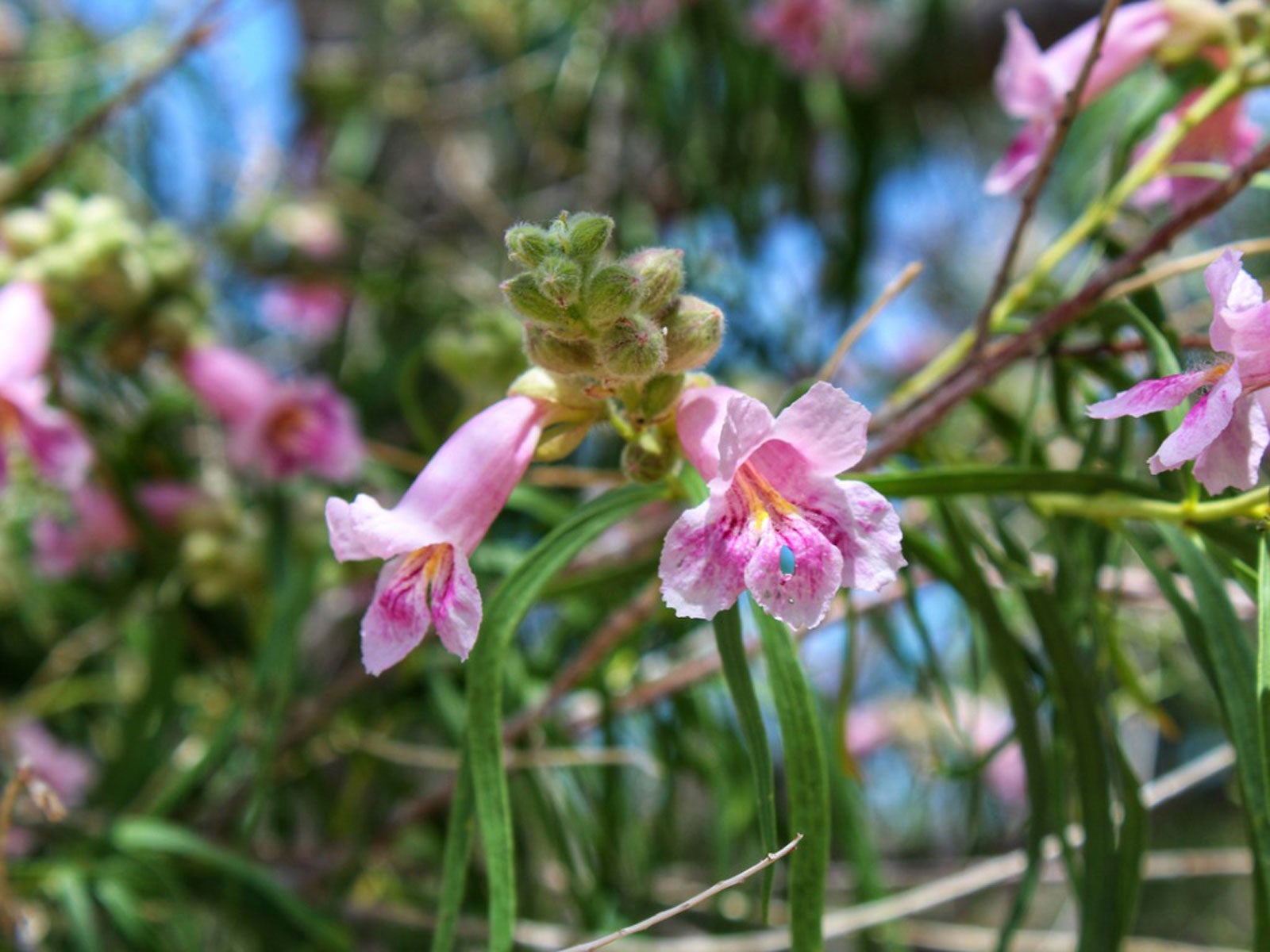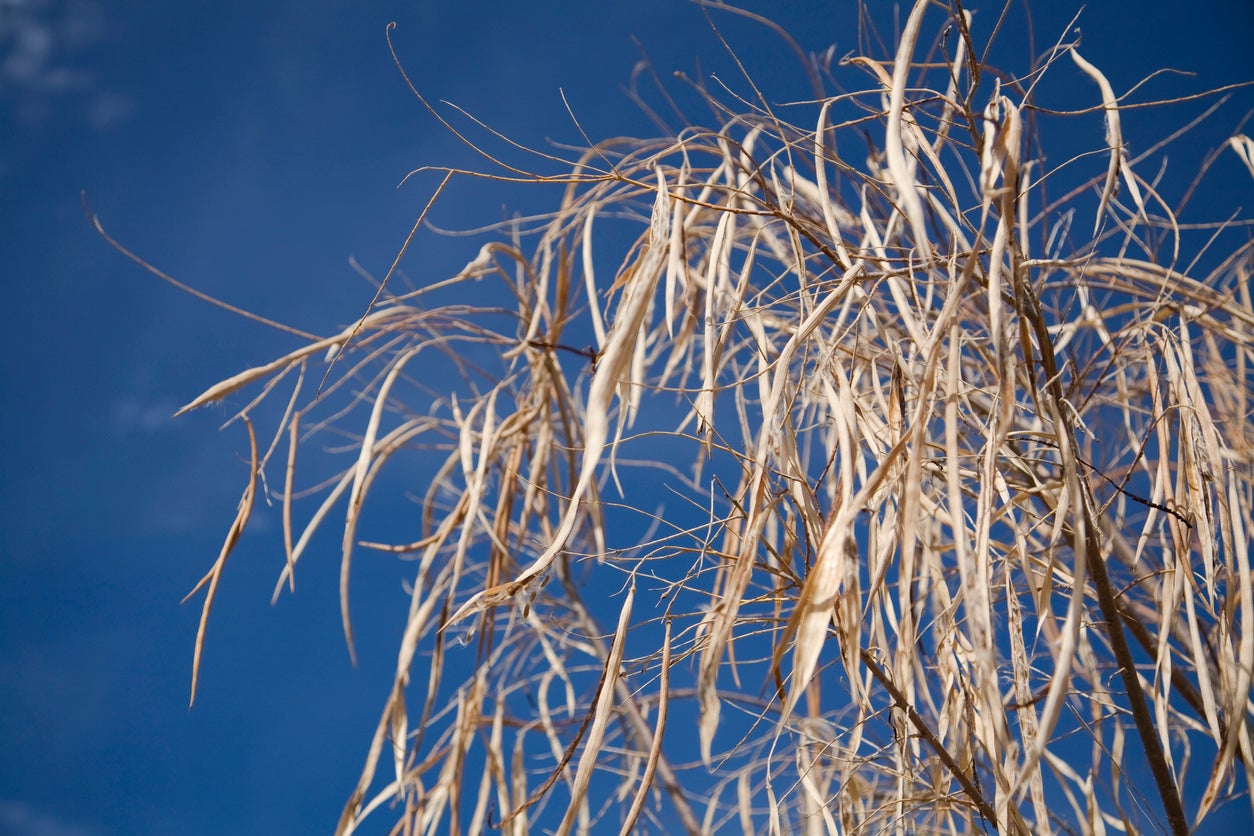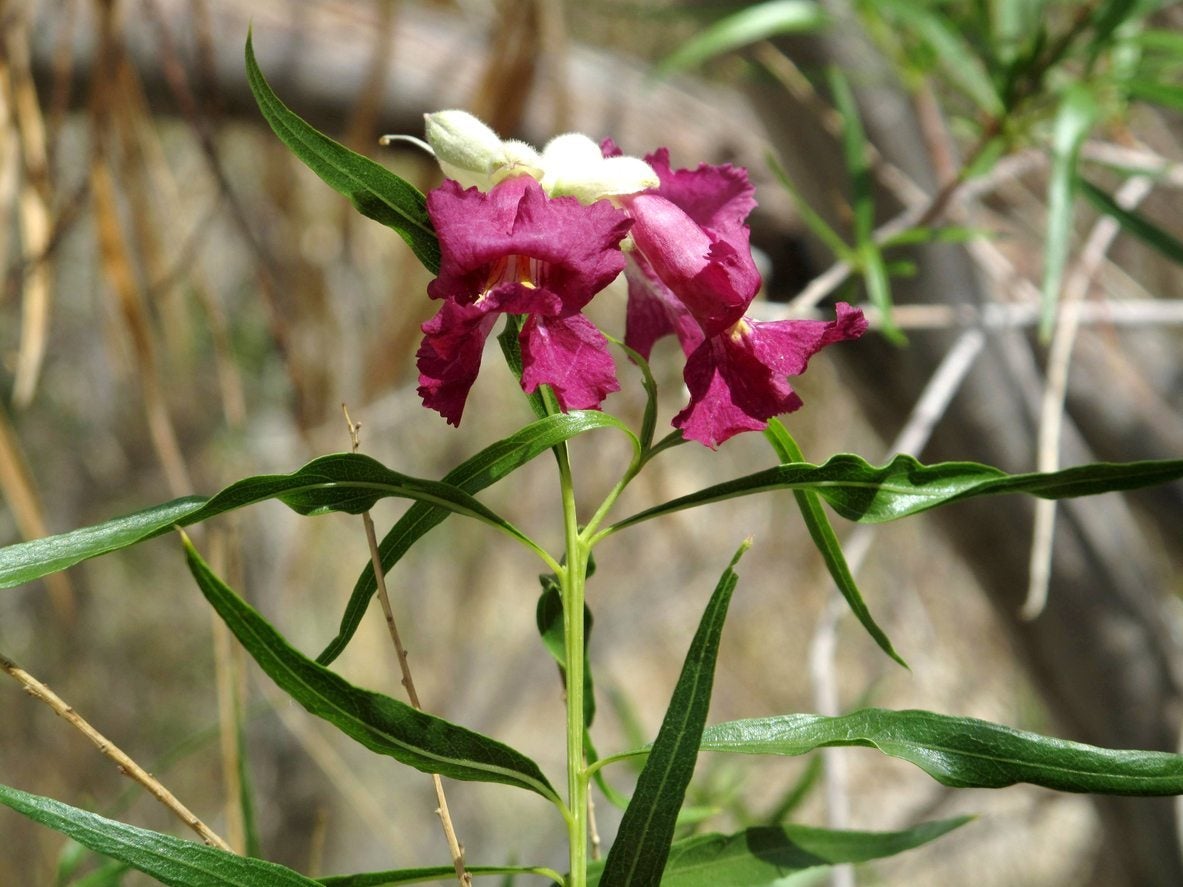Desert Willow Tree Facts: Caring For And Planting Desert Willow Trees


The desert willow is a little tree that adds color and fragrance to your backyard, provides summer shade, and attracts birds, hummingbirds, and bees. The long, slender leaves make you think of willow, but once you learn some desert willow tree facts, you’ll see that it is not in the willow family at all.
Desert Willow Tree Facts
The desert willow’s scientific name is Chilopsis linearis. It’s a small, delicate tree that usually doesn’t grow above 30 feet (9 m.) tall and 25 feet (8 m.) wide. This makes planting desert willow trees possible even for those with small backyards. With its many trunks, the tree presents a unique, graceful silhouette that is familiar in the Southwest deserts. The thin, drooping leaves can get up to 12 inches (31 cm.) long, filling in the irregular crown of the tree with willowy softness. The fragrant trumpet flowers grow in clusters on the branch tips and bloom from spring through fall. They can be found in shades of pink, violet, and white, all with yellow throats. Planting desert willow trees is rewarding and easy if you live in USDA hardiness zones 7b through 11. When placed in a location beside your home, the trees offer summer shade but allow ambient heating in the colder months. Consider planting desert willow trees in groups if you need a privacy screen or windbreak. This kind of grouping also offers shelter to nesting birds.
How to Grow a Desert Willow
What is a desert willow if not an easy tree to grow? Learning how to grow a desert willow is not difficult since it is readily cultivated. The seeds in the long, thin pods grow so readily that the tree is considered invasive in some areas. Planting desert willow trees from cuttings is also possible. One of the most interesting desert willow tree facts is that the seeds establish themselves in newly deposited river sediments after seasonal flowing. The young trees trap and hold soil sediment as their roots grow, creating islands. When you are trying to figure out how to grow a desert willow, remember that the tree is native to the desert. Think full sun and soil with excellent drainage when growing these trees in your landscape. If your region gets more than 30 inches (76 cm.) a year rainfall, plant desert willow trees in raised beds to ensure drainage.
Caring for Desert Willows
As you are gathering desert willow tree facts, don’t forget how easy the tree is to maintain. Caring for a desert willow once it is established is a snap. Like other desert plants, the desert willow only needs a very occasional, deep irrigation. It is pest and disease free and requires little pruning.
Gardening tips, videos, info and more delivered right to your inbox!
Sign up for the Gardening Know How newsletter today and receive a free copy of our e-book "How to Grow Delicious Tomatoes".

Teo Spengler is a master gardener and a docent at the San Francisco Botanical Garden, where she hosts public tours. She has studied horticulture and written about nature, trees, plants, and gardening for more than two decades. Her extended family includes some 30 houseplants and hundreds of outdoor plants, including 250 trees, which are her main passion. Spengler currently splits her life between San Francisco and the French Basque Country, though she was raised in Alaska, giving her experience of gardening in a range of climates.
-
 Try The Trend – Turn Any Bed Into A Keyhole Garden With This Clever In-Ground Composter
Try The Trend – Turn Any Bed Into A Keyhole Garden With This Clever In-Ground ComposterKeyhole gardening is an efficient and sustainable practice that saves space. Get started on this DIY project quickly and easily with an in-ground composter.
By Bonnie L. Grant
-
 4 Superfast Composting Methods: Turn Waste Into Garden Gold In 30 Days Or Less
4 Superfast Composting Methods: Turn Waste Into Garden Gold In 30 Days Or LessTry the fastest composting methods to turbocharge your pile and transform kitchen scraps and garden waste into finished compost in just a few weeks.
By Mary Ellen Ellis
-
 Desert Willow Seed Germination – When To Plant Desert Willow Seeds
Desert Willow Seed Germination – When To Plant Desert Willow SeedsThose living in USDA zones 7b-11 are often enchanted with desert willow. It’s drought tolerant, easy to care for and grows rapidly. How do you go about growing desert willow from seed? This article is about planting desert willow seeds! Click here to learn more!
By Shelley Pierce
-
 When To Prune A Desert Willow – Tips On Pruning Desert Willows
When To Prune A Desert Willow – Tips On Pruning Desert WillowsDesert willow is not a willow, although it look like one with its long, thin leaves. It grows so rapidly that the plant can get scraggly if left to its own devices. Trimming a desert willow keeps the plant looking tidy and attractive. For information on pruning, click this article.
By Teo Spengler